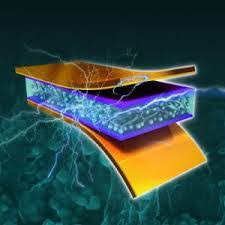Study of Band Gap Structure (Nano Electronic Devices) Based on Nano-Micro electronics (Educational Doctor)
Researcher and author: Engineer Afshin Rashid
Note: Examination of the band structure of nanoelectronic devices in addition to introducing a method for investigating the performance of one-dimensional systems has enabled the improvement of the electrical-optical properties of electronic components.
Organic-based devices due to the weak intermolecular bonds in the nanoparticles created by them, can be largely mechanically flexible . Unlike these organic materials, minerals such as silicon, germanium, and gallium arsenide are only usable in crystalline states in the structure of electronic devices, whereby covalent bonds make flexibility impossible. Properties such as strength, flexibility, electrical conductivity, magnetic properties, color, reactivity and so on. Starting to change the properties of a material by shrinking it depends, above all, on the type of material and property desired. For example, by shrinking the size of a material, it generally improves some of the mechanical properties of the material such as strength. This increase in strength does not occur only in the range of a few nanometers, and may result in a few tensile strengths and Even a hundred nanometers is much more than large-scale mass matter. On the other hand, some properties change, such as color and magnetic properties, can occur only in a few nanometers.
In addition to these two cases, the state of energy balances of the electrons around each atom and the number of electrons in the bottom layer also determine the properties of that atom or substance. This property can have a decisive role in the mechanism of its chemical composition. For example, the properties of a metal ion are different from that of an atom. So far, the role of the three factors of atomic number, mass number and electron arrangement of matter in determining the properties of the nanostructured electrons of the material is important. The macroscopic properties of a material such as melting point, boiling point, and electrical conductivity are studied through a sample that is large enough to measure under the usual conditions of nanoparticles. This is not true for all materials, when material size is reduced to nanometer dimensions, the behavior and properties may be Quite different in size to the same material.
If we reduce a material with a band structure of nano-electronics with a scale of a few tens of meters and reach millimeter dimensions, no change in melting point, color, or magnetic properties will occur, but this change as the material is smaller in size. Nanometers can be seen and the number of surface atoms in materials larger than nanometers is negligible, but as they enter the nanometer world, the amount of these atoms is much larger than that of all matter atoms.




